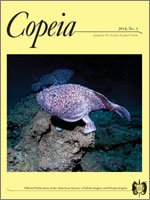The Mojave rattlesnake (Crotalus scutulatus scutulatus) is considered one of the most dangerous in North America and its venom can be classified into three types (Type A, B, and A B) according to its neurotoxic and/or hemorrhagic effects. The objective of this study was to identify the venom of several individuals of C. s. scutulatus present in the Comarca Lagunera, Mexico. Eleven venom samples of the Mojave rattlesnake collected at several localities from the center of Chihuahuan Desert were evaluated by SDS-PAGE, western blot, and gelatinase, hyaluronidase, and hemorrhagic activity tests. In addition, DNA samples were analyzed by PCR to identify Mojave toxin and disintegrin genes. Based on the similar biochemistry and biological activity demonstrated by all the venoms of C. s. scutulatus from the Comarca Lagunera, and considering the absence of Mojave toxin in these venoms, it is possible to establish that individuals with Type B venom are distributed within the Comarca Lagunera. This work represents the first study of the venom of a population of C. s. scutulatus in Mexico and confirms the second population with Type B venom of this species within its geographic distribution.
How to translate text using browser tools
1 March 2014
Mojave Rattlesnake (Crotalus scutulatus scutulatus) with Type B Venom from Mexico
Miguel Borja,
Gamaliel Castañeda,
Jorge Espinosa,
Edgar Neri,
Alejandro Carbajal,
Herlinda Clement,
Osvaldo García,
Alejandro Alagon
ACCESS THE FULL ARTICLE





